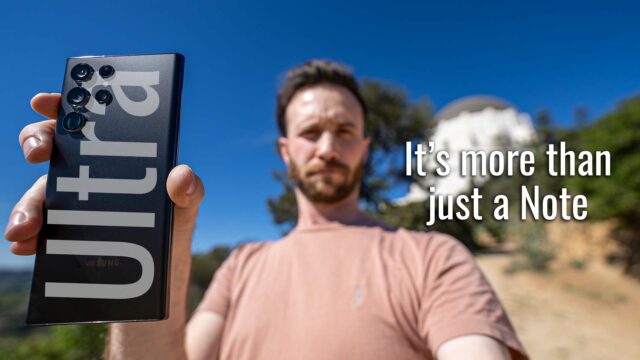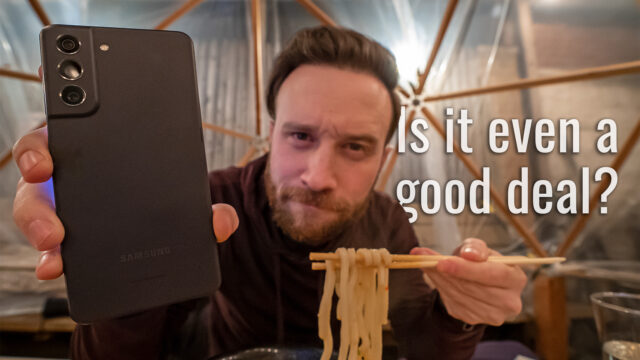At Samsung’s VR Pilot Week, I Experienced Something in VR I Never Have Before
Samsung is really pushing VR.
It began with the mission to get VR hardware into the hands of more people that weren’t about to go out and buy a high-end HTC Vive or Oculus Rift. The release of the Gear VR headset in November of 2015, followed by the second gen a year later (and other smaller updates after that), its relatively low price (so long as you had one of Samsung’s compatible devices), and the fact those compatible devices were already in the hands of millions of consumers, and we arrive at today.
As of last year, Samsung released a statement saying they’ve sold over 5 million Gear VR headsets to date. That’s more than Oculus, HTC, and Playstation VR combined. The words “not too shabby” definitely come to mind.
So now that they have a considerable number of hardware users out there, they seem to be focusing on the next part of the VR equation: the content.
Samsung Pilot Week Content
At an event last week, Samsung held their own VR version of pilot season. If you aren’t familiar, pilot season is the time each year that producers create a pilot or test episodes of the shows they are trying to pitch to various networks (ABC, NBC, CBS, etc.) in the hopes they’ll choose their pilot and create the show with them. For Samsung, however, there aren’t any gatekeepers to have to impress to pick up the shows, they are the gatekeepers.
So Samsung went out and found 6 indie filmmakers, let them borrow Samsung’s high-end commercial 360-camera (we’ll get to that bad boy in a sec), gave them some additional funding to produce the shows, and then offered them exclusive distribution in their own VR Video app that Gear VR users currently use to watch VR content on.
These filmmakers came up with episodic series for VR that range from Bro Bots, a comedy about two best buddy robot cops in the future, to Sam’s Surreal Gems, a fun series set in real-world locations that challenges viewers to find Easter eggs hidden in the scene, to The Interpretation of Dreams, a dive into each of Sigmund Freud’s original case studies for his legendary book published in 1899, and more (full list here for those interested).
I got a chance to watch one of these while I was at the event called &Design, an educational series that looks at design with renowned curator Paola Antonelli as our guide. The episode I watched was about a series of death masks called Vespers, created at the MIT Media Lab. These masks were designed to capture someone’s last breath and turn it into a celebratory and unique piece of art.
And I have to admit; I loved it. It was educational (this nerd likes tutorials), it was a great story, and the filmmakers used all sorts of transitions and techniques that felt seamless and not forced like the traditional VR “hey let’s make the user thing they blinked and ended up somewhere else.”
It felt so seamless that even though I saw the time was around 6 mins long before I began the episode (and, if I’m honest dreaded being in the headset for that long), I watched the end credits scroll up and thought to myself that not only did it not feel like 6 mins, but that I could have kept watching–something I don’t think I’ve ever said in regards to VR content before.
And I heard similar experiences from others at the event.
Narrative Content in VR?
Now, a lot of this comes down to the incredible filmmakers Samsung tapped for this. People like Shelby Ross whom I had the pleasure of chatting with about VR content as a whole in addition to the choices he made for the &Design episode I was about to watch. We discussed the challenges with making people comfortable (aka not vomiting while watching–always key), with using 360 and VR in a useful way instead of just putting it somewhere out in the world and letting it record aimlessly which seems to be the initial gut reaction to content in VR, to the challenges of narrative stories when a user has the free-will to look anywhere they please and not necessarily where you want them to, etc.
The bottom line, the conclusion, we both kept coming to though was this: VR and 360 content is a new medium, and it needs to be experimented with, and no one knows yet how it’ll be used.
Shelby even went as far as to say the challenge of doing something in a medium that very few people utilize or understand is what motivated him to do the project with Samsung. And considering he immediately came over to me after he saw that I had just watched his piece, asked for feedback and genuinely seemed interested in the responses, I’d say he’s treating it exactly as he should.
Now, besides all of these creative filmmakers, there was one other star in my eyes at the event: the 360 Round camera.
Samsung 360 Round Camera
This unibody, IP65 rated camera can be left out in the rain or snow to record a football game, for example. And it records using its 17 cameras, eight pairs of cameras around the circumference (meaning it can also do 3D VR 360) and one top camera each with CMOS 1/2.9″ sensors with f1.8 and f2.8 apertures.
It can output 4K by 4K at 30fps, can support 12-bit color, records to an SD card or, using the USB-C port, to an external SSD, and even has an ethernet port for live streaming this 360 VR content.
The most exciting thing though, besides that crazy hardware, is the bundled proprietary software Samsung includes. This software is meant to be used in-between offloading and editing in your linear editor (Premiere Pro, for example) and has been designed to take out a lot of the headaches that come with 360 and stereoscopic recording.
Editors can use it for live editing and streaming or use it for post-production. It allows them to do some basic things like color correcting, but also things like moving the stitch lines (the lines the computer creates where it combines images from multiple cameras to create the full 360-degree image), adjust the overlap, etc. Something your traditional editing program just can’t do.
The price for this camera and the included software? $10,500. Which, yes, sounds like a lot of money, but when you consider the comparable Jaunt One camera is about $76,000, it no longer seems that bad.
Conclusion
Having watched the content and seen what the camera can do, it’s pretty obvious that Samsung is serious about VR this year. And even though, I’m still skeptical as to how well adopted it’ll become by the end of this year, I am excited.
I’m excited for what this new medium might become. I’m excited that there are filmmakers out there who recognize the challenge of VR/360 and welcome it with open arms and experimental transitions, shots, and takes. And I’m excited to see the technology becoming better and better and more and more accessible to creators and viewers everywhere.
Now, I’m not sure that these shows are going to be the future of VR frankly. This all very much still feels like we’re in the first stages of this medium and can’t see the forest for the trees. In the same way, that we went from stage plays to moving pictures and directors just decided to set up the camera facing one direction with a wide shot (essentially mimicking a play on video since this is what they had been used to, of course) and it took a while for pans, slides, transitions, close-ups, visual effects, etc. to be introduced, we still have no idea what techniques will come out of this genre until they are created.
Did the content I watched need to be in 360? I’m not sure it did honestly, but maybe 360 content doesn’t have to draw your attention all around, what if it just needs to feel more immersive than traditional flat filmmaking? Like when 3D first came out and everyone would throw things at the camera/audience until that lost its novelty (and became annoying) and now it’s just there, much more subtle and yet more immersive than without.
I’m not sure, but one thing I will admit though right now, I fully intend to watch the rest of the &Design series when it’s released.





















I think you know that I like a lot VR, that’s why I became an ambassador in a VR Forum (I think there was the first time I posted one of your articles and contacted you like 3 years ago or so), well I know a lot of options (for sure less than you) to record VR or 360 videos and pictures, something amazing is that there is no need to do a great video, sometimes just a nice picture in 360 and even better if it’s a spherical stereoscopic one, where you can really feel the depth of the things, I think that’s the magic of this Samsung Camera, having two “cameras” in order to have the stereoscopic perspective is really a great addition, there are other not so profesional options, for example, Do you know about this one: Vuze Camera ( http://a.co/412U6ec ), yo should try to contact them, ask for a review camera and then send it to me to review it as well hahahaha just joking about that las part.
Great article my friend.
Ha I do remember that. Wow 3 years? Time is going too fast, I swear.
Yeah, it’s an amazing piece of kit. I’d love to test it a bit actually and I agree that if you have a good enough image people will watch at the moment. I think that will fade though as people get more and more used to things in 360/VR and the narrative will become super important (how we use the camera to tell a story). Either way, I’m super excited to see how the industry progresses.
Ha, I’ll check it out!
Thanks for reading, sir!